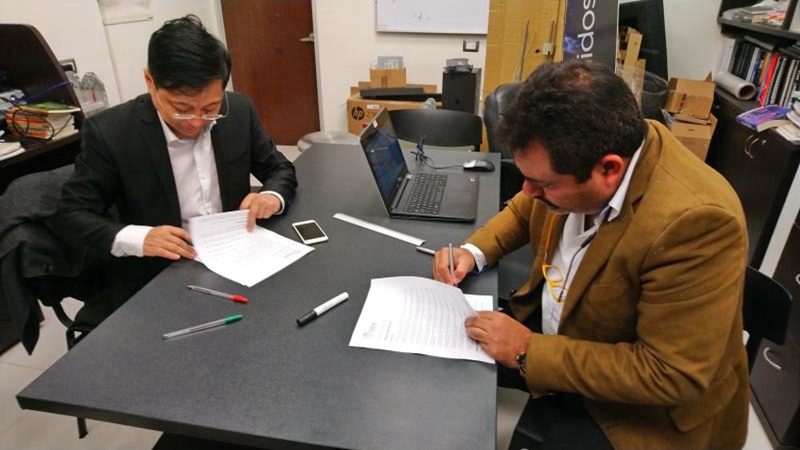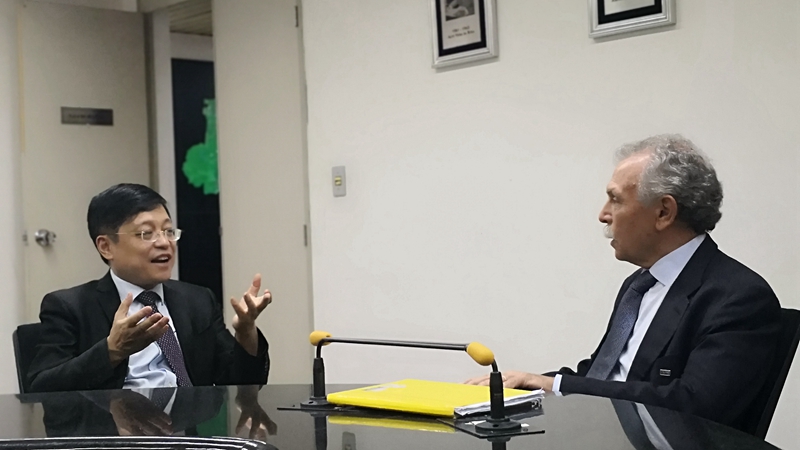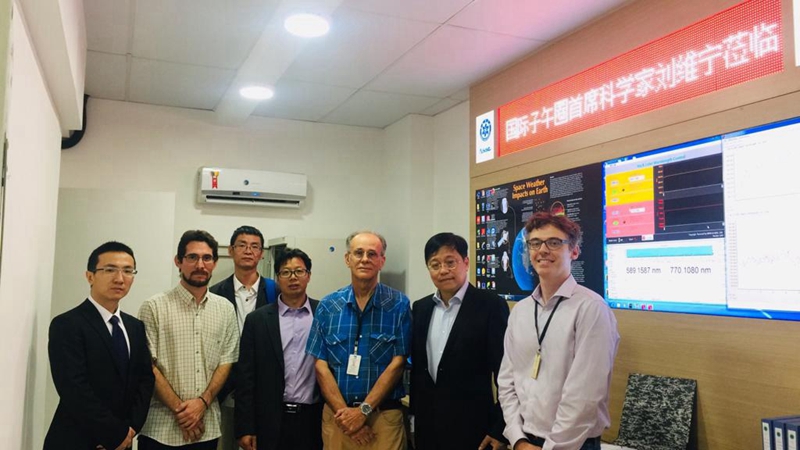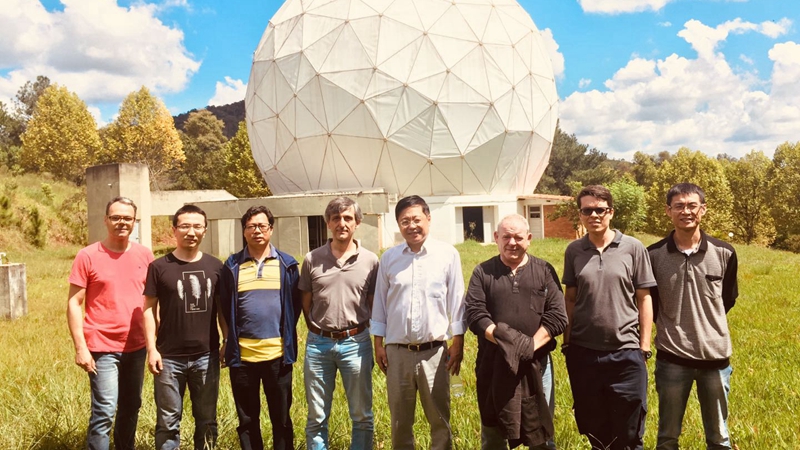At the invitation of Professor Eduardo of UANL, Chair of the 4th Workshop on Planetary Astrophysics, and Professor Joaquim, Director of the Space Weather Program of the National Institute for Space Research (INPE) of Brazil, and entrusted by Prof. WANG Chi, Director General of the National Space Science Center (NSSC) of Chinese Academy of Sciences (CAS), Prof. LIU Weining from the State Key Laboratory of Space Weather of NSSC visited Mexico and Brazil from March 17 to 26, 2019 to discuss and promote the cooperation in the International Meridian Circle Program (IMCP), an international big science project, and the China-Brazil Joint Laboratory for Space Weather/ CAS Laboratory for Space Weather in South America (hereinafter referred to as the joint Laboratory).
During the 4th Workshop on Planetary Astrophysics held in Mexico, the NSSC delegation introduced in detail the basic background information of the IMCP. The attending scientists from UANL of Mexico, the University of Nuevo León, the Mexican Astronomical Observatory and other universities and scientific institutions also gave brief introductions to their respective research work. The Mexican side expressed the willingness to cooperate with China in the field of space weather by jointly deploying equipment with vantage points. During the visit in Mexico, Prof. Gonzalez Spencer, Vice President of the University of Nuevo León, met with the delegation and cordially expressed that he would attach great importance to the construction of potential joint laboratory and hoped that a bilateral framework agreement on IMCP could be signed in the name of the university at the earliest convenience.
During the visit in Brazil, Prof. GALVAO, President of INPE, warmly welcomed the delegation. During the meeting, Prof. LIU Weining exchanged views with Prof. GALVAO and other Brazilian researchers on the progress of China's ground-based space environment monitoring network, the International Meridian Circle Program and the follow-up bilateral cooperation on space weather, as well as other issues of mutual concern. The delegation also visited the joint lab for space weather and effectively communicated with the postdocs working at the joint lab. Professor Joaquim, the co-director of the joint lab, introduced the current status and capabilities of space weather research and forecasting in Brazil, which was followed by a visit of the space weather monitoring demonstration hall.
In addition, the NSSC delegation visited the Solar Observation Laboratory and Prof. Luis delivered a talk on the Brazilian Galileo Space Solar Telescope. The NSSC delegation also visited the Brazilian Satellite Assembly and Integration Test Center to learn about the basic information concerning the satellite assembly and test hall that currently under construction, and Prof. Rizzto presented the developments and achievements of the Brazilian satellite endeavor. During the visit to Mackenzie Presbyterian University (UPM), Prof. LIU Weining introduced the current status and progress of IMCP, and Prof. Jean briefly introduced the Center for Radio Astronomy and Astrophysics of UPM. Both sides had an in-depth discussion and exchanged views on potential cooperation areas and modes of cooperation. The delegation was also accompanied to visit the Atibaia Radio Observatory in Sao Paulo State.

Fig. 1: Prof. LIU Weining and Prof. Eduardo Perez, Head of Space Physics Department of UANL of Mexico, signing the intention of cooperation
Fig. 2: Prof. Weining Liu and Prof. Galvao in discussion
Fig. 3: The NSSC delegation visits the CAS Laboratory for Space Weather in South America
Fig. 4: The NSSC delegation visited the Atibaia Radio Observatory of Mackenzie Presbyterian University (UPM)




